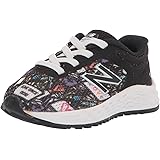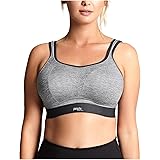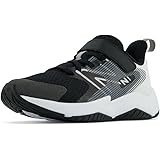Feeling overwhelmed by kitchen chaos and the perpetual question of “what’s for dinner?” As highlighted in the insightful video above, a disorganized kitchen doesn’t just look messy—it siphons energy and derails even the most earnest attempts at healthy eating and efficient meal prep. Imagine if your kitchen could become a streamlined hub for wellness, effortlessly supporting your nutritional goals and freeing up mental space. This deep dive expands on the critical connection between an organized culinary environment and sustainable healthy eating, offering strategic approaches to kitchen organization and effective meal prepping.
The journey to a healthier lifestyle often begins at home, specifically in the kitchen. When ingredients are tucked away in a disarrayed pantry or a cluttered fridge, making nutritious choices becomes a battle against inefficiency and mental fatigue. Conversely, a well-organized kitchen acts as a powerful catalyst, simplifying meal preparation, reducing food waste, and fostering a sense of calm. This methodical approach is particularly beneficial for busy individuals and families striving to balance demanding schedules with dietary adherence, such as counting macros or ensuring adequate nutrient intake.
Revitalizing Your Kitchen: Strategic Organization for Peak Performance
Embarking on a comprehensive kitchen overhaul, starting with the fridge and pantry, can dramatically enhance your daily routine. The video underscores the immediate impact of tackling these high-traffic areas, transforming them from chaotic catch-alls into orderly, functional spaces. This is more than just aesthetics; it’s about creating a system where ingredients are visible, accessible, and intelligently stored. Consider how an organized pantry, with items categorized and contained, allows for quicker meal planning and grocery list creation, minimizing impulsive purchases.
A key aspect of effective fridge organization involves leveraging appropriate storage solutions. As seen in the video, investing in quality organizers for produce, dairy, and meal prep components can be transformative. Glass jars, for instance, are excellent for washing and storing berries or chopped vegetables, extending freshness while providing clear visibility. These containers not only prevent cross-contamination but also elevate the visual appeal of your fridge, making healthy options more enticing. Furthermore, a systematic approach means categorizing items, perhaps dedicating specific shelves or bins for ‘breakfast items’ or ‘dinner components,’ streamlining the entire cooking process.
Mastering the Pantry: From Clutter to Clarity
The pantry, often a repository of forgotten items and expired goods, demands a similar level of strategic intervention. Begin by emptying shelves, allowing for a thorough wipe-down and an honest inventory of contents. This crucial step forces a confrontation with unused ingredients and facilitates a logical regrouping of staples. Hypothetically, if your pantry currently houses a jumble of grains, canned goods, and snacks, a strategic reorganization might involve designated zones for each, perhaps using stackable bins for bulk items and clear containers for frequently used dry goods. This not only optimizes space but also prevents duplicate purchases.
Beyond simple decluttering, consider implementing ‘meal bins’ or themed storage areas. The video offers a practical example of creating bins for ‘breakfast’ and ‘taco night,’ alongside dedicated spaces for frequently used condiments like ketchup. This method simplifies daily decision-making; imagine knowing precisely where all components for your Tuesday night tacos reside, without rummaging. For canned goods, while acknowledging concerns about BPA liners, having a well-stocked and organized section ensures readiness for quick meals, particularly beneficial during unexpected busy periods or when adhering to specific dietary plans. Exploring alternatives like BPA-free pouches for items such as beans, as mentioned in the transcript, represents a thoughtful approach to health-conscious stocking.
Fueling Your Body: Electrolytes, Macros, and High-Protein Meal Prep
Beyond the physical organization of the kitchen, understanding and actively managing nutritional intake is paramount for sustained energy and performance. The discussion around electrolytes in the video highlights a critical, yet often overlooked, component of daily wellness. A striking statistic reveals that a staggering seventy-five percent of individuals are deficient in magnesium, a vital mineral involved in over 300 bodily functions. This deficiency can manifest as low energy, poor recovery from workouts, and compromised focus, underscoring why many still feel sluggish despite consuming other electrolyte products.
The importance of magnesium’s different forms is emphasized: magnesium L-3 and A are recognized for their cognitive benefits, enhancing focus; magnesium Malate supports energy production; and magnesium Glycinate is crucial for muscle recovery. Coupled with sodium and potassium for maximum hydration, a comprehensive electrolyte blend can significantly impact overall well-being, moving beyond mere hydration to support cellular function. Imagine how consistent intake of these crucial minerals could transform your energy levels, enabling you to tackle demanding days and intense workouts with renewed vigor. This strategic supplementation offers a caffeine-free path to sustained natural energy and improved stress regulation, a stark contrast to “salt bomb” alternatives that can lead to bloating and discomfort.
Crafting Nutritious Meals: Recipes for a Revitalized Body
Integrating high-protein, fiber-rich meals into a busy schedule becomes considerably simpler with thoughtful meal prep. The video showcases several excellent examples that align with macro-counting goals and general healthy eating. The ‘Creamy Protein Chicken Pasta,’ for instance, is a testament to leveraging pantry staples for a delicious and nutritionally dense meal. Utilizing ingredients like chicken thighs, Greek yogurt, cream cheese, and protein pasta, seasoned with Italian spices, smoked paprika, onion, and garlic, it’s an ideal choice for weekly lunches. The crockpot method further simplifies preparation, allowing for minimal hands-on time and maximum flavor development. This strategic choice of a high-protein dish provides sustained energy and supports muscle maintenance, crucial for active individuals.
Similarly, the ‘Protein Pancakes’ and ‘Protein Banana Bread’ offer versatile, healthy alternatives for breakfast or snacks. These recipes can be adapted to personal preferences, such as incorporating pumpkin for seasonal variations. Protein pancakes, made with eggs, cottage cheese, and rolled oats (each half-cup of oats contributing four grams of dietary fiber), provide a substantial and satisfying start to the day. The banana bread, though briefly a victim of a forgotten protein scoop in the video, demonstrates the ease with which a scoop of protein powder (like Truvani banana protein) can be integrated without altering texture, boosting its nutritional profile. Such thoughtful additions ensure that everyday treats contribute positively to daily protein and fiber targets, aligning with a holistic approach to nutrition.
Beyond the Plate: Integrating Wellness into Daily Life
Successful meal prep and kitchen organization extend beyond merely having healthy recipes; it involves establishing systems that support consistent adherence. This includes mindful grocery shopping, where you take stock of existing ingredients before hitting the aisles, as demonstrated in the video. This prevents overbuying, reduces food waste, and ensures that your meal plan aligns with what you actually have on hand. Imagine a shopping trip where every item purchased directly contributes to pre-planned meals, eliminating impulse buys and ensuring a fully stocked pantry ready for action.
Furthermore, incorporating small, health-supporting habits, such as soaking produce in glass jars for extended freshness or preparing immune-boosting concoctions like garlic honey, fortifies the body against everyday stressors and seasonal ailments. These subtle yet impactful routines, from organizing electrolytes to prepping protein-rich snacks, cumulatively contribute to improved mental clarity, reduced stress, and enhanced physical resilience. Ultimately, a kitchen reset is not just about cleaning and arranging; it’s an intentional step towards cultivating a life where wellness is seamlessly integrated into every facet, creating an environment that actively supports your goals for Kitchen Organization and Healthy Meal Prep.











